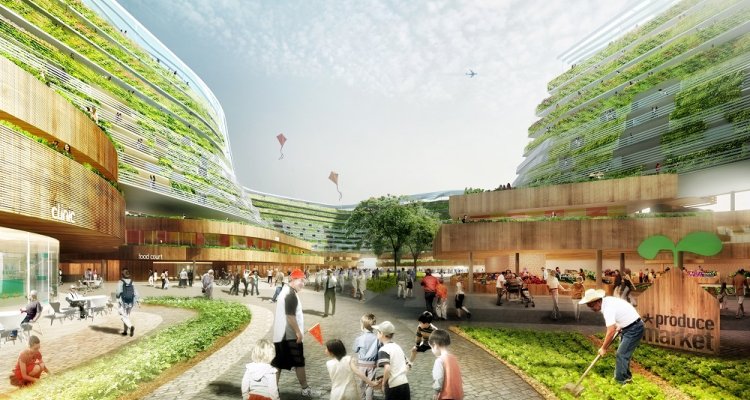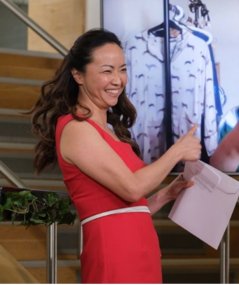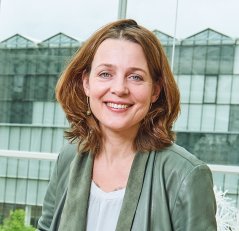
Meet the jury
The jury of the Urban Greenhouse Challenge'2 consists of six renowned experts with deep understanding of the building-blocks of a successful urban greenhouse concept. Meet the jury members:
- Tiffany Tsui
- Cindy van Rijswick
- Chris Monaghan
- Tao Li
- Sigrid Wertheim-Heck
- Martin Probst
Tiffany Tsui

Tiffany Tsui has a long career in green development and works as an independent advisor for governments, companies and universities. Her biggest strength is connecting interdisciplinary topics. Tsui considers herself ‘the spider in the web’. In addition, she co-founded Novafresh+, a venture focusing on sustainable supply chains and urban food production.
“Each jury member of the Urban Greenhouse Challenge has his or her own expertise and I judge the interdisciplinary totality: how different aspects work together as a whole. That might be the hardest challenge for students: bringing all disciplines together into one concept. Especially since for example architecture students are trained very differently from biology students. The key is to build the concept around one main question, to which all disciplines then contribute. Sometimes teams paste together concepts that they think the jury likes, but then the red line - and their ideals - are missing. That shows. In addition to a good proposal, teams must ‘sell’ their idea by establishing their own characteristics and emotional connection with the audience. Some teams did that very well and created for example their own photos and images to give the concept more authenticity. That can help bring a concept to life.”
Cindy van Rijswick
Cindy van Rijswick studied economics and now applies this knowledge at the Food and Agribusiness Research of Rabobank Group in Utrecht. She focusses on the market development of fresh produce like fruit and vegetables. In addition, Van Rijswick advises companies about strategic development, such as possibilities to expand. For some years now, she has been involved in urban- and vertical farming projects, which led her to the Urban Greenhouse Challenge.
- Unfortunately, your cookie settings do not allow videos to be displayed. - check your settings
Chris Monaghan

Chris Monaghan is the innovation and ventures director at Metabolic, a company focusing on sustainability and the circular economy. Metabolic consults companies, governments and NGOs on how to create sustainable strategies and they address critical challenges by creating new ventures. Monaghan is an expert in circular economy, sustainability, team building, and creating business models for new organisations.
“I joined the Urban Greenhouse Challenge because I am passionate about agrifood topics and I really like the set-up of the challenge: an international competition where students design an urban greenhouse for an existing piece of land. During the challenge, some teams impressed me by taking circularity to the next level. They did not just consider the greenhouse as a closed system, but as a gear wheel in a larger system: the neighborhood or broader community. Their plans include processing waste and turning it into chemicals and proteins for the surrounding area. While most teams focused on food sales, some made their urban greenhouse a site for R&D, technological innovation, or education. I think that is a smart business plan that can be profitable. And that kind of activity is important too: it has to be more than a pretty building.”
Tao Li

Tao Li is a plant researcher with a background in plant physiology. After spending a great deal of his time in greenhouses during his PhD at Wageningen University & Research, he moved back to China. Li now works for the Chinese Academy of Agricultural Sciences (CAAS) where he focusses on lighting in greenhouses.
“Overall I am very impressed by the urban greenhouse designs of the student teams. One of the things I hope I taught the students is that, while species diversity in small urban farms is good, each species requires different growth condition and management procedures. That could complicate the food production system and result in high running cost. Some teams did take this into consideration: they propose to grow mushroom on a lower floor, where less light is available, and cultivate crops that need a lot of light on the rooftop. I was also happy to see that all finalists included circularity into their concept. One team even proposed to grow mushrooms on coffee waste. I never heard about this concept before and I think it is an excellent idea.”
Sigrid Wertheim-Heck

Dr. Sigrid Wertheim-Heck is a researcher in consumption sociology at Wageningen University & Research and professor in food and healthy living at the applied university Aeres. She focusses on the transition towards more sustainable food systems and studies the relationship between metropolitan development, food provisioning and food consumption. Wertheim-Heck worked and lived in Asia for several years, during which she experienced local conditions.
“I have embraced the Urban Greenhouse Challenge from day one. It offers a great opportunity for students: they are confronted with the strength of their own knowledge and learn to apply it in conjunction with other disciplines. That way students develop teamwork skills. The brilliant ideas formed during this competition stress the importance of such challenges. One team for example came up with a great idea to encourage social changes. In Asia, farming has a low social status and is looked down on. One team presented their greenhouse not as an alternative to traditional farming, but as an instrument to reunite farmers and city dwellers. Their greenhouse highlights the importance of farming and presents novel technologies in the field. With their concept they want to make farmers proud of their profession and make farming trendy.”
Martin Probst
Martin Probst is an architect and urban planner at the international architectural company MLA+. As urban planner, Probst does not focus on one single building, but takes cities, streets and public areas into consideration.
“The urban greenhouses designed by the student teams is one piece of a bigger picture: the greenhouse is part of a park, which is part of a new area that is part of a city. I was happy to see that some teams were very aware of that and tried to connect their greenhouse to the surrounding area. Some even considered the big impact of China on the world - and the future of the planet - and tried to contribute in a positive way. That is one of the reasons why I enjoy these competitions: students have an open mind and a fresh outlook on life and the future. The next step is to sell the novel idea. I noticed that students still need to learn how to present their idea attractively. It is important to grab your audience’s attention within the first two minutes, or you will lose them completely. Visual presentations, rather than large pieces of text, could help with that.”